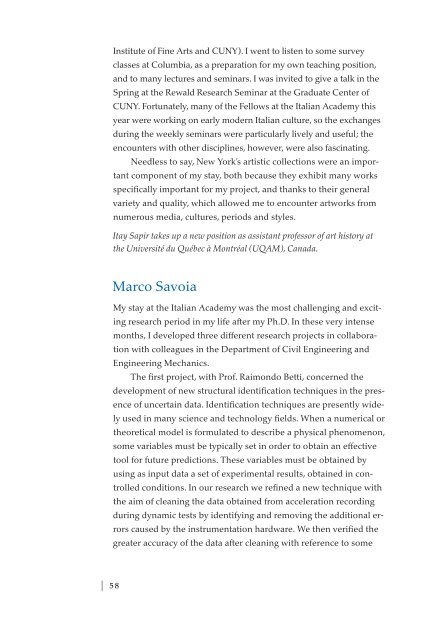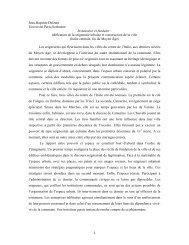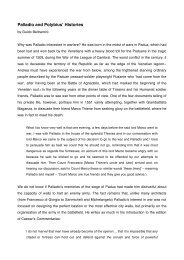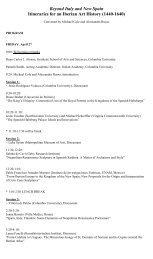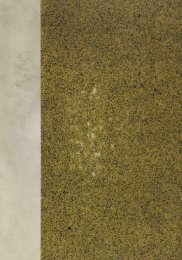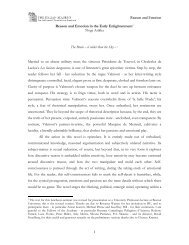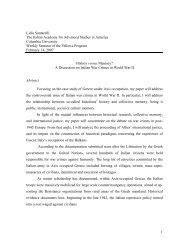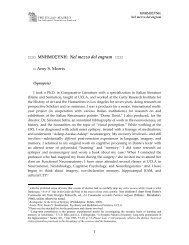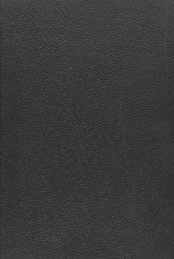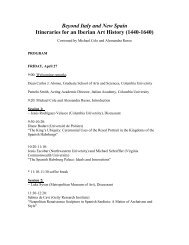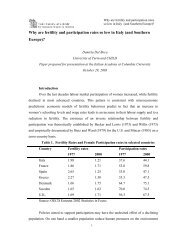2011-2012 - The Italian Academy - Columbia University
2011-2012 - The Italian Academy - Columbia University
2011-2012 - The Italian Academy - Columbia University
Create successful ePaper yourself
Turn your PDF publications into a flip-book with our unique Google optimized e-Paper software.
Institute of Fine Arts and CUNY). I went to listen to some survey<br />
classes at <strong>Columbia</strong>, as a preparation for my own teaching position,<br />
and to many lectures and seminars. I was invited to give a talk in the<br />
Spring at the Rewald Research Seminar at the Graduate Center of<br />
CUNY. Fortunately, many of the Fellows at the <strong>Italian</strong> <strong>Academy</strong> this<br />
year were working on early modern <strong>Italian</strong> culture, so the exchanges<br />
during the weekly seminars were particularly lively and useful; the<br />
encounters with other disciplines, however, were also fascinating.<br />
Needless to say, New York’s artistic collections were an important<br />
component of my stay, both because they exhibit many works<br />
specifically important for my project, and thanks to their general<br />
variety and quality, which allowed me to encounter artworks from<br />
numerous media, cultures, periods and styles.<br />
Itay Sapir takes up a new position as assistant professor of art history at<br />
the Université du Québec à Montréal (UQAM), Canada.<br />
Marco Savoia<br />
My stay at the <strong>Italian</strong> <strong>Academy</strong> was the most challenging and exciting<br />
research period in my life after my Ph.D. In these very intense<br />
months, I developed three different research projects in collaboration<br />
with colleagues in the Department of Civil Engineering and<br />
Engineering Mechanics.<br />
<strong>The</strong> first project, with Prof. Raimondo Betti, concerned the<br />
development of new structural identification techniques in the presence<br />
of uncertain data. Identification techniques are presently widely<br />
used in many science and technology fields. When a numerical or<br />
theoretical model is formulated to describe a physical phenomenon,<br />
some variables must be typically set in order to obtain an effective<br />
tool for future predictions. <strong>The</strong>se variables must be obtained by<br />
using as input data a set of experimental results, obtained in controlled<br />
conditions. In our research we refined a new technique with<br />
the aim of cleaning the data obtained from acceleration recording<br />
during dynamic tests by identifying and removing the additional errors<br />
caused by the instrumentation hardware. We then verified the<br />
greater accuracy of the data after cleaning with reference to some<br />
| 58


